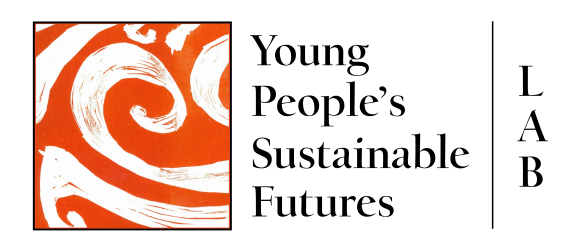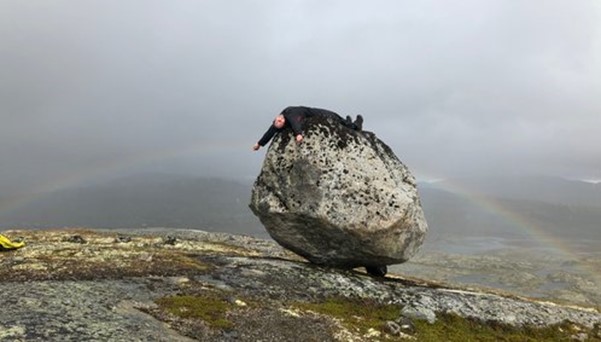
The Promise of Wild Pedagogies
This is the third in a series of four blogs that seek to explore, through an extensive review of the literature, the proposition that ‘wild pedagogies’, as an element of a wider framework of regenerative education, have the potential to reengage CALD young people in the senior years of schooling. In undertaking this literature review, this series of blogs aims to contribute to ongoing educational debates about the barriers faced by CALD young people and potential approaches to reducing such barriers.
In the first blog, the crises of the Anthropocene were introduced to contextualise the experiences of Culturally and Linguistically Diverse (CALD) young people in Australian education settings. Blog 2 examined some of the key themes within the research literature regarding the challenges faced by CALD young people in Victorian State education. This blog will examine the concept of ‘wild pedagogies’ (Jickling et al. 2018:77-105). It will firstly provide an overview of regenerative education (Berg et al. 2022:2; Buckton et al. 2023:826), before exploring wild pedagogy theory and two prominent themes within the literature.
Regenerative Education
Regenerative education is an emergent pedagogical paradigm that surpasses the boundaries of traditional education frameworks (Cardozo 2023:1625). It includes a deep concern for the environment and the particular challenges that the Anthropocene presents (Roncancio et al. 2019:3312; Benitez et al. 2019:859; Esteves 2018:26). This transformative approach seeks to cultivate an active awareness of the human-environment relationship and our responsibility in navigating the future (Berg et al. 2022:2).
Bas Van Den Berg’s The Regenerative Education Podcast series discusses the principles of regenerative education and its implications (Berg 2023). These principles include holism, sustainability, place-based education, experiential learning, cultural and Indigenous knowledge, community engagement, systems thinking and personal development (Wooltorton et al. 2022:643; Bergquist et al. 2019:548; Berg et al. 2022:2; Gaia Education 2022 Camrass 2023; Sanford 2020). Buckton et al. (2023) provide a succinct snapshot of regenerative systems theory and its application to education in terms of relationships, roles, and content:
Pedagogy for regenerative futures is constantly evolving and embraces connectivity between the human and more-than-human, and ambiguity. Teachers create conditions for the emergence of creativity and mutualism, including transdisciplinary and finding inspiration from nature, drawing especially on ideas from regenerative design. Students are not just taught about environmental crises but are also given the wisdom and skills to encourage regeneration and flourishing of life. Sustainability education is decolonised and recentred on Indigenous histories, concepts, and wisdom. (Buckton et al. 2023:826).
Wild Pedagogies
Wild pedagogy is an intriguing and relatively new educational concept that builds on the concept of regenerative education (Velempini et al. 2022:157). It reflects a growing recognition of the limitations of traditional educational frameworks, and the potential of holistic, place-based, and experiential approaches (Krigstin et al. 2023:2). Wild pedagogy is a concept and a movement that emerged across a series of gatherings of like-minded educators and scholars (Jensen et al. 2022:7). A 2017 gathering in Scotland gave rise to the Crex Crex Collective and the 2018 book, Wild Pedagogies: Touchstones for Re-Negotiating Education and the Environment in the Anthropocene, which provided theoretical foundations through a pedagogical framework of six touchstones (Jensen et al. 2022:7; Jickling et al. 2018:77-105). These include nature as co-teacher; complexity, the unknown and spontaneity; locating the wild; time and practice; socio-cultural change; and building alliances with the human community (Jickling et al. 2018:79; Hempsall 2022:223). Jickling et al. (2018:1) provide the following definition of wild pedagogies:
Wild pedagogies, first, [aim] to re-examine relationships with places, landscapes, nature, more-than-human beings and the wild. This requires rethinking the concepts wilderness, wildness, and freedom.
Central to this definition includes the notion that humans must re-examine their relationships with nature to shed light on colonial and human-centric connotations (Jickling et al. 2018:25). ‘Wild’ can be taken as ‘self-willed’ and indicative of ‘freedom to flourish’. Wild pedagogies challenge ‘dominant cultural ideas about control – of each other, of nature of education and of learning’ (Jickling et al. 2018:3). A foundational aspect of wild pedagogy is the connection of wildness with ‘wonder’ (Jickling et al. 2018:34;40; Krigstin et al. 2023:2; Schmidt et al. 2022:57). Subsequent gatherings of wild pedagogues, among them a 2019 outdoor seminar in Finse, Norway, have generated several research publications, as explored within the podcast on transnatural perspectives (Wildpedagogies, 2023). Within these publications, and those produced elsewhere, arise two core themes of place-based learning and experiential learning.
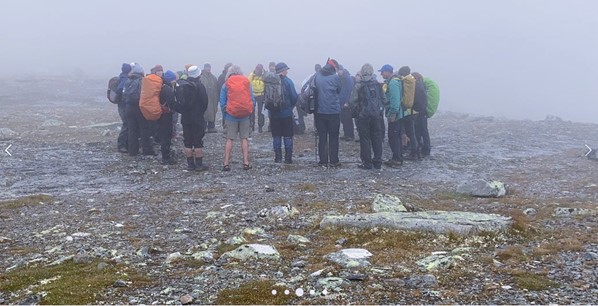
Image Credit: ‘A Walking Colloquium’, Wild Pedagogies, (2023)
Place-Based Learning
Place-based learning is a key theme in the literature on wild pedagogies (Jickling et al. 2018:69). It is an experiential learning approach in which learning is based in an alternative physical location (Langran & DeWitt 2020:2). A study conducted by Krigstin et al. (2023:2) among undergraduate engineering students, analysed the reflections of students after the practice of forest bathing. This immersion enhanced students’ resilience, with 96% reporting increased well-being, and 93% reporting increased ecological consciousness (Krigstin et al. 2023:9). The study highlights the effect of place on students’ intrapersonal intelligence:
Intrapersonal intelligence involves a deep awareness of one’s emotional state and feelings. Both are important for navigating everyday … experiences such as stress and anxiety. Overall, wild pedagogies may improve students’ academic performance by reducing stress, giving way to clear thinking, boosting energy levels, and helping them understand their feelings, which helps restore resilience. (Krigstin et al. 2023:8).
Place-based learning also features in MacEachren’s (2022:102) study of the more-than-human phenomenon of fire, and Beavington et al.’s (2022:51) study of human experiences with glaciers, both of which highlight the transformative capacity of alternative places to influence learning. Additionally, Peterson’s (2021:58) research among disadvantaged secondary school students found that the students immersion in an outdoor setting whilst working aboard a fishing vessel led to significant improvements in well-being. A core component throughout research includes the benefits of place-based learning on relationships between peers and teachers (Peterson 2021:57). This literature suggests the positive influences of place-based learning within wild pedagogies on students’ well-being, relationality, and curiosity.
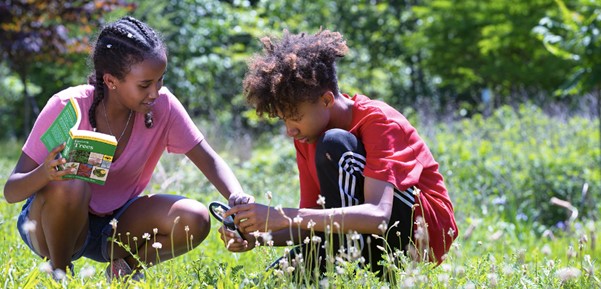
Image Credit: ‘Place-Based Learning’, National Geographic, (2020)
Experiential Learning
Experiential learning is another key theme within the literature on wild pedagogy (Jickling et al. 2018:60). Experiential learning is a process of learning where students are actively engaged within a task, and learning follows thereafter through reflection, conceptualisation, and experimentation (Kolb 2015:2). Indeed, experiential learning lies at the heart of wild pedagogy, as highlighted by Velempini and Kethoilwe (2022:158):
Experiential learning … engages students in high-level thinking and applying knowledge and skills … to deepen their understanding of the natural world. It places greater responsibility on students to develop their personal understanding, as well as to apply and transfer knowledge and skills through an activity. Engagement in an activity in the wild may also promote attitudinal change through reflection. Therefore, wild pedagogies in environmental education provide an ideal opportunity for active learning.
A range of studies highlight the capacity of wild pedagogy to facilitate experiential learning (Jickling et al. 2018:60; Jensen et al. 2022:7; Velempini & Kethoilwe 2022: 158; Hempsall 2022:223; Green 2022:85). One study follows the outdoor education activities in teacher education in Botswana and reflects on the testimonies, which find that wilder forms of experiential learning are more valued by learners as they are not constrained by predetermined outcomes (Velempini & Kethoilwe 2022:170). Students reported they could observe, feel, experiment, reflect and connect with nature (Velempini & Kethoilwe 2022:157; Jensen 2022:9). These experiences are individualised, with students reporting that learning developments were relevant and personalised (Velempini & Kethoilwe 2022:166).
Green (2022:86) draws similar conclusions in her study on Alaska Native Children which places cameras on children’s heads in the forest. Here she discusses the self-serving influence of colonialism on traditional education frameworks, and the ability of wild pedagogy to deconstruct these barriers in facilitating students’ sense of agency and spatial autonomy (Green, 2022:86). Spatial autonomy, she argues “plays an important role in environmental identity formation … and has been shown to boost children’s self-confidence” (Green 2022:86). This literature suggests the benefits of experiential learning within wild pedagogical frameworks on students through deepened and individualised learning.
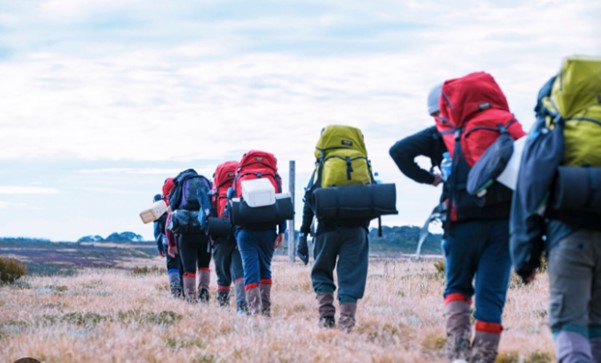
Image Credit: ‘OEG’ (2021), The Outdoor Education Group
